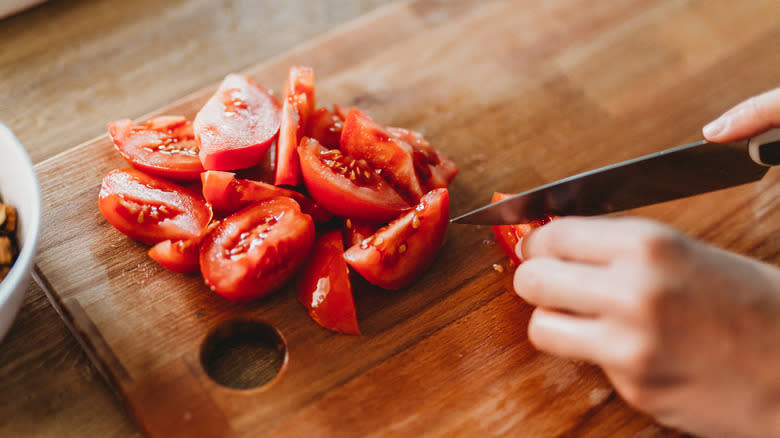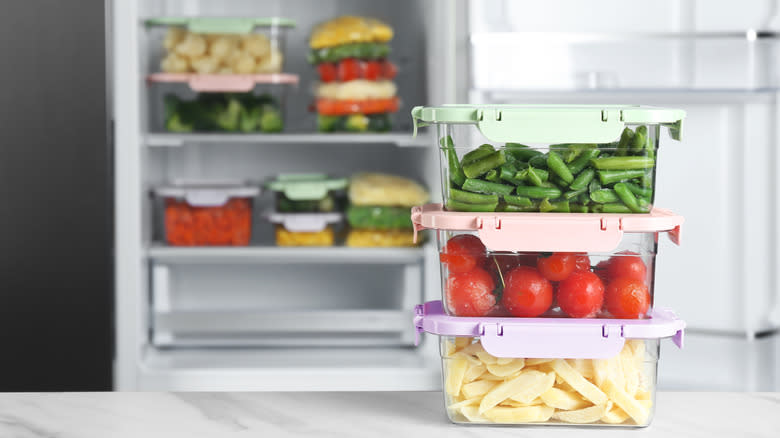Here's The Proper Way To Store Cut Tomatoes

Let's say you were preparing a hearty stew, and the chopped tomatoes you cut were more than enough. Or after assembling the perfect tomato sandwiches, you discover you have extra tomato slices you don't need. Whether you're dealing with tomato halves, diced pieces, or slices, knowing how to store the leftovers properly can prevent food waste and extend the life of your fresh produce until the next time you need them. Your best shot is to store them in the refrigerator.
For tomato halves, you can wrap the cut side with plastic wrap tightly, place them on a plate cut side down, and pop them in the fridge. Leftover tomato cubes or slices are best transferred into an airtight container or sealed bag and stored in the fridge. The goal is to keep the cut sides of the tomatoes covered to reduce moisture loss while also preventing odor transfer from other foods in the refrigerator.
Cut tomatoes will last in the fridge for about one to two days (three days at most), so make sure you use them within that period. If you notice any signs of spoilage like slimy texture, foul smell, or mold, discard the tomatoes immediately. Otherwise, to eat the still-fresh pieces, remove them from the fridge and let them stand for about 30 minutes to bring them to room temperature. This step will help make your tomatoes more delicious by restoring the natural flavor of the fruits.
Read more: 21 Delicious Ways To Use Up Leftover Rice
Storing Cut Tomatoes In The Freezer

If you need to keep the leftover cut tomatoes for more than a couple of days, then the best alternative is to freeze them. This will keep the fruits for up to six months. Start by flash-freezing the tomato slices or cubes spaced out on a parchment-lined baking sheet then transfer into a sealable bag or air-tight container. The initial flash freeze will ensure the cut tomatoes don't stick to each other, making it easier to take out just a little at a time according to your needs. Label the bag or container with the date so you can keep track of how long they've been stored.
The only downside to freezing tomatoes is that the texture changes drastically due to the high moisture content the fruits carry. Because of this, frozen tomatoes can only be used in cooked recipes where the texture isn't a big deal. But first, you'll need to thaw them in the refrigerator overnight or add them still frozen into the dish as it's still cooking. Just remember, once thawed, they should be used quickly and not refrozen, as this can degrade their quality further.
Read the original article on Tasting Table

